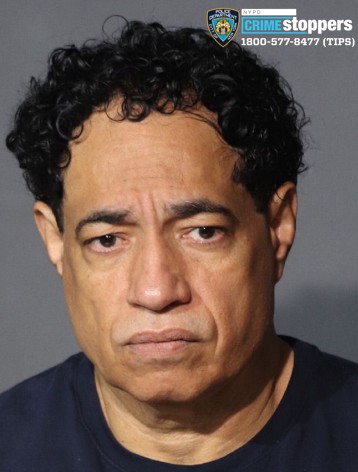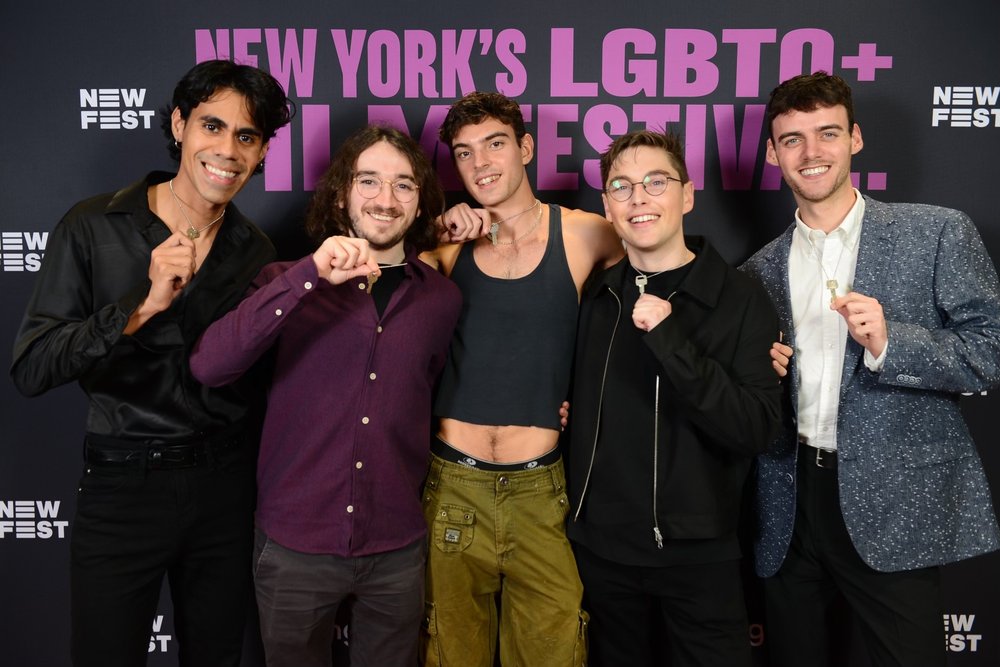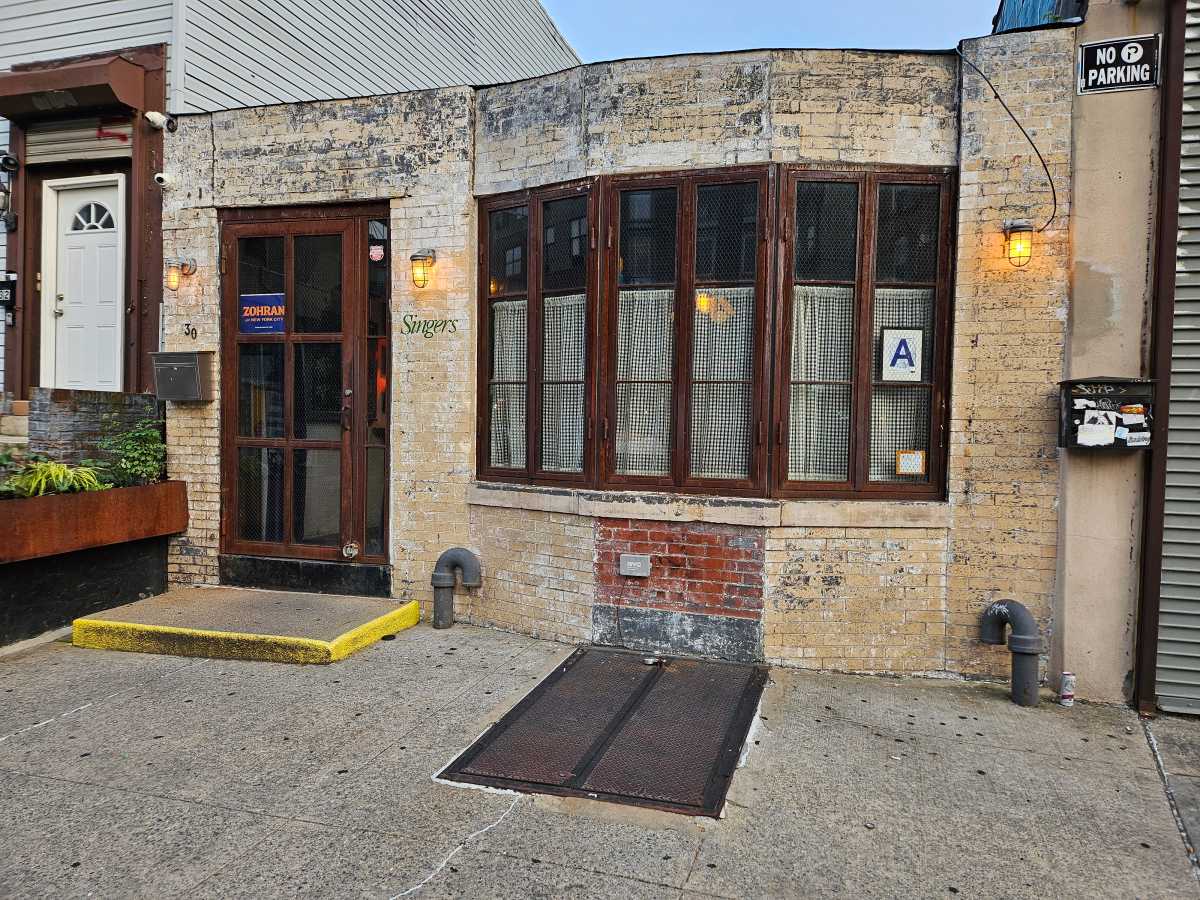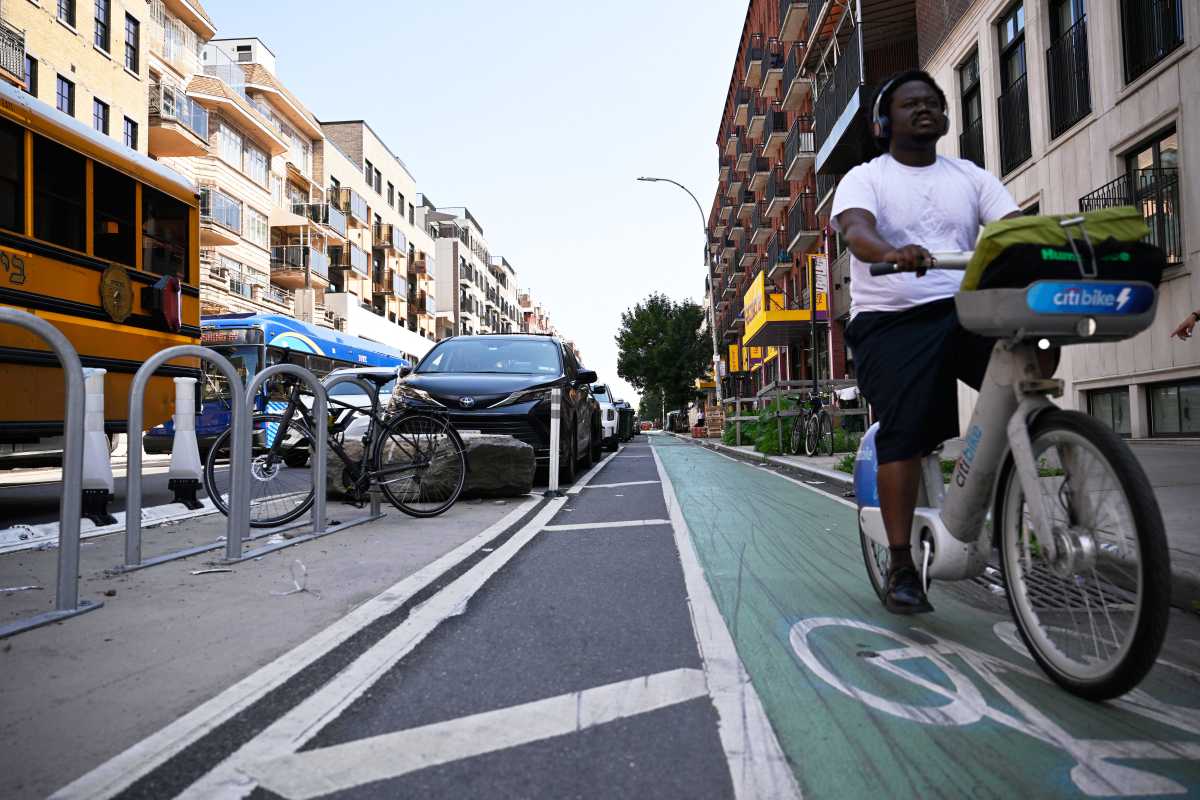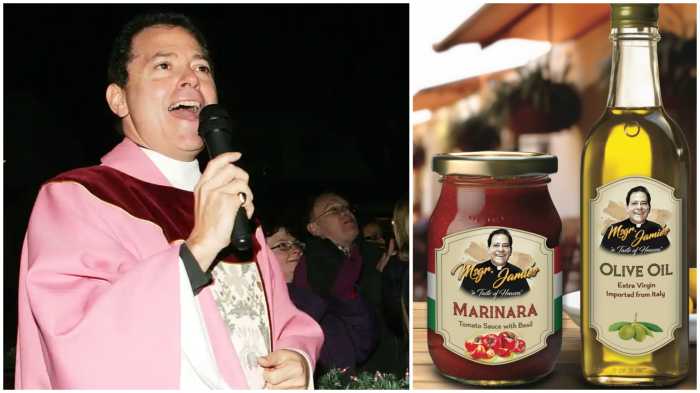
BY LINCOLN ANDERSON | Canada Goose is the hottest coat in New York right now. It is literally “the warmest” coat, built to handle the brutal, subfreezing conditions in “The Great White North.”
Sporting their distinctive red-white-and-blue, circular shoulder patches, the pricey parkas — which sell for up to $1,500 — are ubiquitous on the streets….as well as in the subways, cafes, elevators. Some call them “status symbols.”
Every time you turn your head, it seems, there goes someone else wearing a Canada Goose coat, whether black, green, red or blue. It’s as if a Canada Goose army is roaming the streets. Why, the coats are almost as common as togas in ancient Rome, Mao tunics in China, “cheese heads” at a Green Bay Packers game.
But while Canada Goose coats are hot right now, animal-rights activists have been turning up the heat on the international brand. As well as the shoulder patch, many of the coats sport an eye-catching real coyote-fur ruff — the trim around the hood’s edge. In addition, the jackets are filled with goose and duck down. The activists charge that the coyotes are cruelly caught in the wild with steel-jawed traps, and suffer until they die or are either shot, strangled or bludgeoned to death. Many other animals are also inadvertently snared in the traps, they add. They also suspect that the down comes from “live-plucked” birds — though Canada Goose strenuously denies this.
Meanwhile, the luxury coat maker has experienced a huge growth in recent years, with $300 million in sales in 2015. Previously, the coats were sold in department stores. But in November, Canada Goose opened its first two stand-alone flagship retail stores, in Toronto and in Soho in New York City.
The activists in New York have been making some noise — make that a lot of noise — over the new store. Loud protests have been ongoing since the place’s Nov. 17 opening at 101 Wooster St., between Spring and Prince Sts.
There reportedly are also ongoing protests at the Toronto store, plus at retail locations selling Canada Goose garb around the world in spots like Tokyo and Stockholm. The protesters here hail from a number of different animal-rights groups, including Toronto Pig Save, People for the Ethical Treatment of Animals (PETA), Caring Activists Against Fur (CAAF), LION, Woodstock Farm Sanctuary and TheirTurn.
As for the Wooster St. block, it is fully residential and the people living on it have been driven to distraction by the protests, which are biggest and loudest on the weekends.
According to police, there was only one arrest at the location in the past three weeks: On Sat., Feb. 4., Robert McCullough, 33, of Prospect Lefferts Garden in Brooklyn, was charged with disorderly conduct. However, a handout sheet from City Councilmember Margaret Chin at last Thursday’s Community Board 2 full-board meeting said there had been a total of three arrests on Feb. 3 and Feb. 4, with one person being charged with “aggravated harassment.”
The silent approach
Taking a new tack, though, late last Saturday afternoon the activists held a totally silent vigil in front of the Soho outerwear outlet. Holding electric candles and protest signs — “Don’t be a fur hag,” “Wear your own skin” — about 250 of them lined both sides of the street outside the store for about 45 minutes as twilight fell. The event, as one of them put it, was “a moment of silence for all the hundreds of thousands of coyotes and geese and other animals caught in the traps.”
A detail of about 20 police from the First Precinct had set up a protest pen on the east side of the street but didn’t make the activists go into it. Also observing things on the police detail was Philip Lam, the executive officer, or second in command, of the Fifth Precinct, who said he had walked over partly because it was “a beautiful day to be out.”
Such was the focus on absolute silence, that one of the group’s leaders repeatedly shushed a reporter who was trying to interview the protesters.
They had marched in silently and then, after the protest, dispersed quietly. Earlier, though, with a drum, two bullhorns and chants, they had started an “anti-fur march” up at Bryant Park and hit Paragon along their way Downtown to the Soho store.

As they marched, their chants included, “Canada Goose, shut them down!”, “The fur trade is a lie! How many animals have to die?” and “There’s no excuse for animal abuse!”
Paragon, the iconic sporting-goods store, at 18th St. and Broadway, features a large selection of Canada Goose coats. The marchers protested loudly outside it, chanting, “Paragon sports has blood on their hands!”
They also chewed out Canada Goose-clad people and handed them fliers as they passed them on the pavement and in cafes along their route.
‘This is so moving’
During the silent Soho protest, Victoria Barbieri, who lives and works in her loft right near the Canada Goose store, came outside with her Italian waterdog, Giovanni Franco Barbieri. She spoke with Michelle Morrow, one of the protesters, who The Villager was interviewing at a slight distance away from the vigilers.
“I live here,” Barbieri said. “It’s been 12 weeks of screaming and yelling. This is so moving,” she said of the quiet, candle-lit protest. “The screaming and yelling just treated us, the residents, like collateral damage. I’m so happy and grateful to see this.”
Barbieri said Giovanni had been “hiding in the bathtub” during the earlier earsplitting demonstrations.
Bending down and petting him, Morrow told him, “Sorry, Giovanni. We’re doing this for all your friends.”
The activists also note that dog fur is often passed off as fox or coyote fur.
Barbieri said she was troubled, however, by reports that even small children had been yelled at by the protesters.
She said she had come outside last Saturday to ring the buzzer of her friends across the street and get them to witness the phenomenon of the silent vigil.
She said she backs the activists’ crusade to get Canada Goose to stop using the coyote-fur ruffs.
“Absolutely, I support that,” she said. At the same time, she added — probably unconsciously using an animal idiom — “We have bigger fish to fry now,” referring to the situation in Washington, D.C.
Trump? Fur-geddaboutit
Indeed, these have been among the few protests in the past few months that have not focused on Donald Trump. Yet Trump — not surprisingly — is also part of the problem on animal rights, Morrow sadly noted.
“He wears fur — and his sons are trophy hunters,” she said. “The animals have no voice anymore.”
In keeping with their ideals, most of the Canada Goose protesters are vegan. A few are only vegetarian — still eating dairy — but will likely soon turn vegan, said Elizabeth Argibay, one of the activists, as she stood holding her candle and sign.
“Treasure all life — go vegan,” a woman standing next to her chimed in. It’s easy to do with all the food options in New York City, they added.

At the January C.B. 2 full-board meeting, Paul Leonard, Councilmember Chin’s communications director, had told the board members that the protests outside the Soho Canada Goose store had become “intolerable” for the block’s residents.
In turn, at last week’s February full-board meeting, 35 animal-rights activists attended in a show of force and resolve. Three of them briefly testified at the start of the meeting during the board’s public session, explaining why they are determined to keep protesting. They said their next stop is the First Precinct Community Council meeting this Thursday, where they will again defend their actions.
As for the community board, it has not passed a resolution on the issue. Terri Cude, the board’s chairperson, said safety is the most important thing.
“While C.B. 2 does not have an official position on the Canada Goose protesters, certainly people should be able to enjoy their homes, and nobody should be made to feel endangered or under attack due to protests on their blocks,” Cude told The Villager. “While I staunchly support the First Amendment, making children feel threatened as they attempt to get home from school is not acceptable.”

Cude good with synths
Asked if she would buy a Canada Goose coat with coyote-fur fringe, she answered, “My winter parka was made from several polyesters and one innocent acrylic.”
The animal-rights activists say they’re confused at this point if they are even allowed to chant at all. Police are now bringing a sound meter and are checking decibel levels. Leonard from Chin’s office said, yes, the protesters can chant, just not above the legal sound limit.
Speaking after Saturday’s protest, Meredith Schriver, wearing a “F— Fur” hat, stressed, “We’re trying to work with the community. We’re here because Canada Goose is here. We’re not against the people who live here.”
Asked if the 100-percent silent vigil will be the norm for the weekend protests going forward, Nathan Semmel, another member of the group, said they can’t necessarily guarantee that, but that they have gotten the message.
“In weeks, you haven’t heard drums and whistles and things like that,” he noted. “We’re adapting.”
Not down with C.G.
Jill Carnegie, who was videoing the protest for the anti-fur fighters, expressed skepticism that Canada Goose’s down is merely a byproduct of the poultry industry.
“It’s been established that basically all down is live-harvested,” she said. “I’ve been researching this as an animal activist for 20 years.” When the fowls’ feathers are live-harvested, their skin can be ripped open, and the bloody birds are then stapled back together again, she said.
They want to see evidence supporting Canada Goose’s claims of humane down harvesting.
“Show the footage,” she challenged.
Carnegie noted that fur was on the decline in the 1980s and through the mid-’90s, but then began to make a comeback as trim. She noted that the coyotes sometimes try to gnaw off their own legs to try to escape the traps.
“Often they’re female — they’re trying to get back to their cubs,” she said.

As a cruelty-free alternative, Carnegie touted VauteCouture, which has a flagship store on the Lower East Side at 114 Stanton St., and offers chic animal-free designs. The company’s statement says it’s “the world’s first vegan fashion brand, founded with a mission of taking animals out of the fashion equation.”
Argibay scoffed that coyote fur is even needed in places like here, saying, “This is New York. They’re not selling to an Arctic-weather audience.”
Function and fashion
But a manager inside the Soho store explained that Canada Goose’s gear was initially created for “function not fashion,” and that’s how it remains today and that many people still buy it for use in extreme conditions. He said coyote fur is one of only a few types of fur that won’t freeze when moist human breath hits it. The fur ruff creates “a pocket of warm air” around the face, he said. The ruffs are detachable for most of the coats, though, which can be purchased without them, he added.
In an official statement to The Villager, Canada Goose said: “No matter where they’re worn, our products are designed and built to protect against the elements in the harshest environments on Earth. We understand that some people think animal products should never be used in any consumer products, including food, and we respect that. However, we do not share the same view.
“PETA and other activist groups misrepresent the facts and use sensational tactics to try to illicit a reaction — they have been using the same rhetoric for years. Such groups attempt to mislead consumers through a series of attacks that ignore strict government regulation and standards, as well as our commitment to ethical sourcing practices and responsible use of fur and down.
“We remain deeply committed to the responsible use and ethical sourcing of all animal materials in our products, as evidenced by our Transparency Standards. We do not condone any wilful mistreatment, neglect or acts that maliciously cause undue pain, injury or suffering toward animals, and we are committed to providing full transparency about how we make our products.”
The company provided two videos briefly stating what they call their humane policy on down and coyote trapping, which are viewable at canadagoose.com. In the case of its down, the company says it comes from birds that, in addition to not being live-plucked, are not force-fed, either, while coyotes are often viewed as “pests” since they prey on livestock.
On display in the Soho store last weekend — in addition to the contentious winter coats — were some of the brand’s “spring collection,” which doesn’t sport coyote fur, though in some cases there is a light layer of down in part or all of the jackets.
‘Goose’ loose at Paragon
At Paragon on Saturday, a salesman working the floor said most of the winter coats for Canada Goose and OSC, another Canadian brand, do feature coyote fur trim. Many of the costly coats — in colors of blue, green and red — were on sale for 25 or 30 percent off.
“But not the black Canada Goose,” he stressed. “It’s the most popular coat in New York.”
Paragon also had hats with jumbo-sized coyote-fur ear flaps for $250.
In a phone interview, a Paragon customer-service representative said the coats have gotten increasingly popular over the past five years.
“Yes, everyone has one in New York City,” she said. “It’s a preference, it’s fashion.”
Asked if she knew about the protests, she said, “I see the news. … We’re just selling the product. It’s up to the customer if they want to buy it.”

Meanwhile, Chin is mainly concerned about keeping down the noise and ensuring that no one is harassed.
“They were clearly violating the decibel levels,” her spokesperson Leonard said of the earlier protests. “There have been incidents where residents were chased down the block and kids harassed, with people sticking graphic images of animals in their faces and using foul language. The councilmember is very happy that the Police Department is enforcing the noise code and ensuring the safety of the residents on that block. And we have reached out to the District Attorney’s Office.”
Chin vs. shark fins
Four years ago, Chin supported a state bill to ban possession of shark fins in New York State. Their use in shark-fin soup, a Chinese delicacy, was believed to be pushing some shark species to extinction.
Asked if he saw any parallel between the protests against consumption of shark fins and the use of coyote fur on coats, Leonard did not directly answer the question.
“Our focus at the site,” he reiterated, “has been to protect the quality of life for residents and ensure their safety.”

Meanwhile, again, it’s not hard to find Canada Goose wearers to interview. The city is crawling with them. At lunchtime last Friday, Warren Dunton, 26 —sporting a black Canada Goose parka with fur trim —was buying a beverage in a Duane Reade near The Villager’s office. He lives in East Midtown and works in 3-D printing sales.
“My girlfriend has one, too, but she doesn’t wear the [fur] collar anymore,” he said. “She volunteers with rescue animals.”
The coyote collar is functional, he said, since it does provide warmth. He demonstrated first by putting it up horizontally around his head.
“You don’t need a scarf, it keeps your ears warm,” he said.
Asked how it works as a hood, he demonstrated the “full snorkel” look by pulling it over his head.
“It’s intense,” he said, smiling. “It’s like the warmest coat I’ve ever had.”
Dunton, for one, will keep wearing his coat now since he already has it. He bought it at a department store before he learned about the protests.
Knowing what he does now about the coats, though, he said, “I would not buy it again.”



